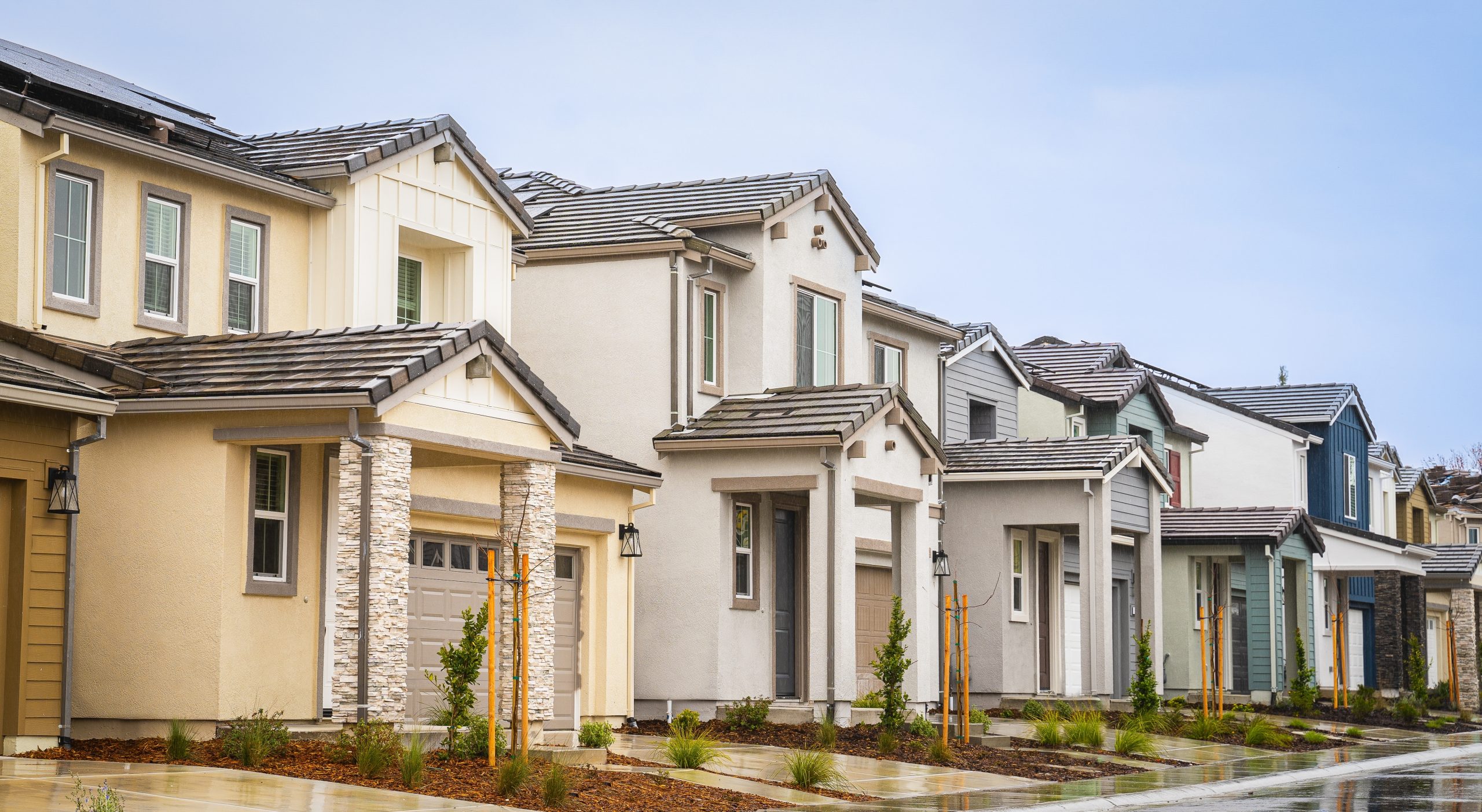After months of tough headlines and three straight months of falling sales, the California housing market has finally caught a break. June brought a small but noticeable rebound, signaling the first signs of stabilization in what’s been a rocky year. While this isn’t a full recovery, it’s a meaningful shift that has real implications for buyers, sellers, and real estate professionals across the state.
Of course, it’s important to keep things in perspective. The California housing market is still under pressure. High interest rates and affordability concerns are keeping some would-be buyers on the sidelines. And sellers are still adjusting to a market that’s very different from the red-hot days of just a few years ago. But even a modest shift toward balance is worth talking about.
In this article, I’ll break down the latest data from the California Association of Realtors, explore how buyers are gaining some ground, look at regional sales trends, and check in on fire-impacted communities like Altadena and Pacific Palisades. If you’re watching the California housing market — whether to buy, sell, or simply stay informed — this is an update you won’t want to miss.
The Rebound in June
Let’s start with the numbers…
In June, California posted 264,260 existing single-family home sales on a seasonally adjusted annualized basis. That’s a 4% increase from May, reversing a three-month streak of declines. It may not seem like much, but in a market that’s been under stress, this bump matters.
Compared to June 2024, sales were down just 0.3%. While that’s still a dip, the fact that year-over-year numbers are almost flat is a promising sign. It shows that the market may have hit a bottom and is starting to level out.
The statewide median home price came in at $899,560. That’s just below the $900K threshold and down 0.1% from both May and the same time last year. In other words, prices are flat — and that’s a reflection of a market where sellers are becoming more realistic and adjusting to the new normal.
Year-to-date, home sales are up just 0.2%, but it’s a fragile gain. If activity slows again in July, 2025 could easily slip behind 2024’s pace. Still, for now, this June rebound is a welcome breath of fresh air for the California housing market.
Buyers Are Getting a Bit More Leverage
The market may not be a buyer’s paradise just yet, but conditions are shifting in their favor. Inventory is up. Active listings have surged over 40% compared to last year, reaching a 68-month high. More homes on the market means more choices — and more negotiating power — for buyers.
Homes are also sitting longer. In June, the median time on market was 24 days, up from just 18 days a year ago. That slowdown gives buyers the opportunity to breathe, do their research, and negotiate rather than rush into bidding wars.
One key metric worth watching is the sales-to-list price ratio. In June, that ratio stood at 99.3%, down from 100% last year. That means homes are now selling slightly below asking — a small shift, but a significant one for anyone trying to get a better deal.
Sellers are more open to price drops, concessions, and even closing credits. We’re hearing stories from across the state about buyers negotiating repairs or upgrades before closing — something that was unheard of just a couple of years ago. If you’ve been waiting for your moment to jump in, the California housing market is starting to offer more opportunities.
Regional Highlights Show Mixed Results

Zooming in, not all areas are rebounding equally. The Far North led the way with a 13.7% jump in sales. Five out of seven counties in that region posted double-digit growth. The Central Coast wasn’t far behind with an 11.4% gain.
Southern California and the Bay Area saw smaller increases — 1.9% and 1% respectively — but any upward movement is good news. The Central Valley was the only region to see a decline, slipping 0.8% year-over-year.
In total, 39 out of 53 California counties posted annual sales gains in June. Kings County was the standout with an 87% spike in sales. Glenn and Humboldt counties weren’t far behind, with increases of 62.5% and 45.5%. However, places like Merced and Lake County saw declines of over 18%, showing just how much local conditions can vary.
This uneven recovery highlights how hyperlocal the California housing market really is. If you’re a buyer or seller, what’s happening in your zip code may be very different from statewide trends. Partnering with a knowledgeable local agent can make all the difference.
Altadena & Pacific Palisades — Six Months After the Wildfires
In wildfire-hit areas like Altadena and Pacific Palisades, the story is very different. Six months after devastating fires swept through these communities, the market has not recovered. In fact, it’s declined even further.
Altadena’s home sales are down a staggering 54.8% year-to-date. Median prices have dropped 39%, falling from $1.425 million to $867,500. That’s one of the sharpest corrections in the entire California housing market.
Pacific Palisades has seen even more extreme losses. Sales fell 83.8%, and the median price dropped from $3.31 million to $2.525 million — a 23.7% slide. Instead of rebuilding, many homeowners are opting to sell their lots, often at significant losses.
Altadena recorded 172 land lot sales in the first half of the year — up from just six during the same period in 2024. In Pacific Palisades, 94 lots sold, compared to just one last year. Rebuilding timelines, insurance complications, and uncertainty about future fires are driving many homeowners to simply walk away. It’s a somber reminder of the long-term impacts that natural disasters have on local housing markets.
What to Watch Next

The road ahead for the California housing market is still uncertain. Mortgage rates remain high — averaging 6.82% in June — which is keeping demand in check. Pending home sales have now declined year-over-year for seven straight months. That doesn’t bode well for July’s numbers.
However, there’s some optimism on the horizon. C.A.R. economists believe sentiment is improving, especially as more buyers adjust to current interest rates and gain confidence in market conditions. If that optimism translates into more offers and stronger activity in late summer, we could see a healthier second half of the year.
It’s also worth watching inventory trends. While overall listings are up, new listings actually fell in June. That could mean sellers are still hesitant, but it also suggests that buyers may face less competition if they act soon. The next few months will be critical in determining whether this rebound has staying power.
For buyers, this may be the most favorable market in years. For sellers, it’s a time to be realistic, strategic, and willing to negotiate. Either way, the California housing market is waking up — and that’s news worth paying attention to.
FAQs
Is the California housing market finally recovering?
Yes, the market rebounded in June with a 4% increase in home sales. While not a full recovery, it’s the first sign of stabilization after several months of declines.
Are home prices going up or down?
Prices remain mostly flat. The median price in June was $899,560, down slightly from May and from a year ago. This suggests sellers are adjusting to current market realities.
Is now a good time to buy a home in California?
Buyers have more leverage now than in previous years. With rising inventory and homes sitting longer on the market, it’s a good time to explore opportunities — especially if you’re well-prepared financially.
What areas are recovering fastest?
The Far North and Central Coast regions led the state in June sales growth. However, performance varies widely by county, so local trends matter most.
What’s happening in wildfire-impacted areas?
Altadena and Pacific Palisades are still struggling. Sales and prices have dropped sharply, and many homeowners are selling lots instead of rebuilding.
Will the market stay strong in the second half of 2025?
It’s possible, especially if buyer sentiment improves. But high mortgage rates and economic uncertainty could keep growth modest. Experts suggest watching July and August closely.

